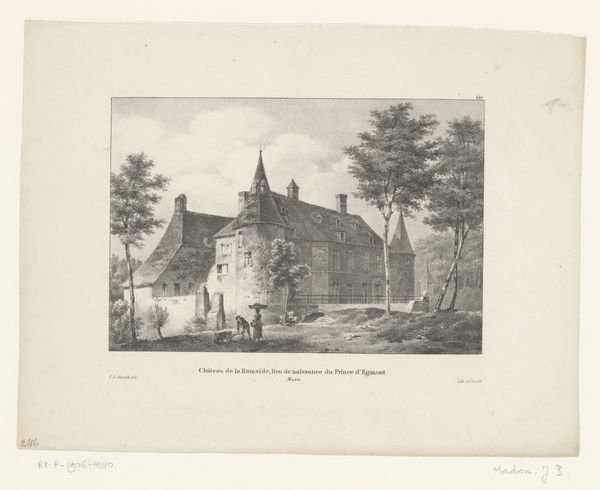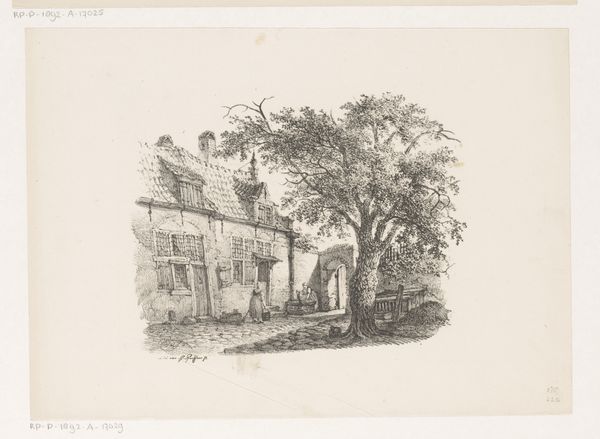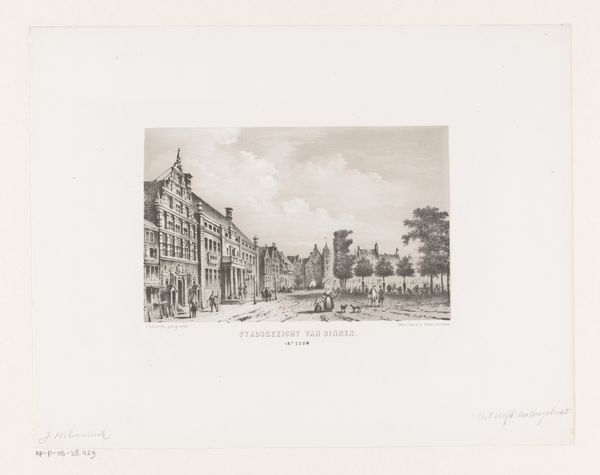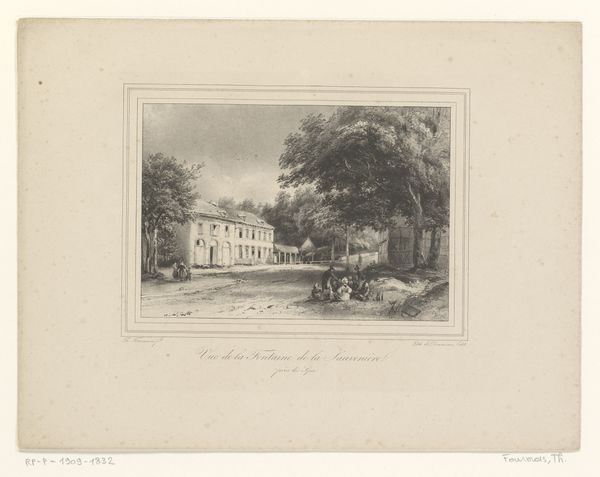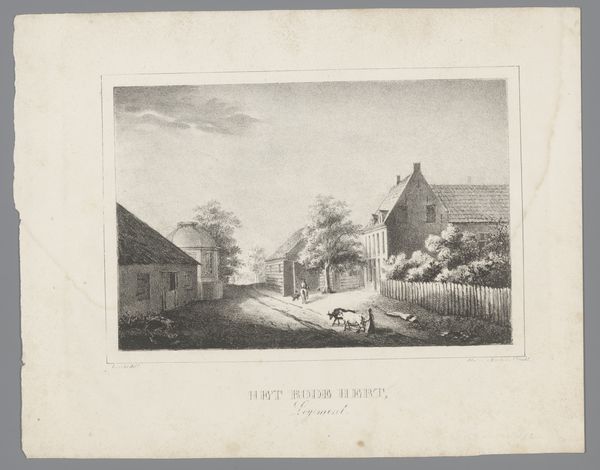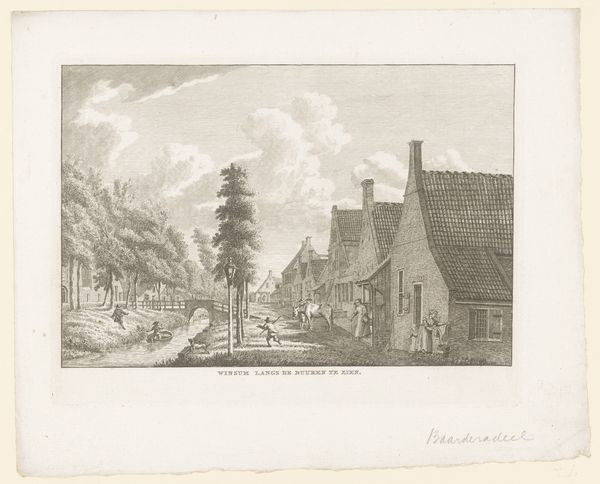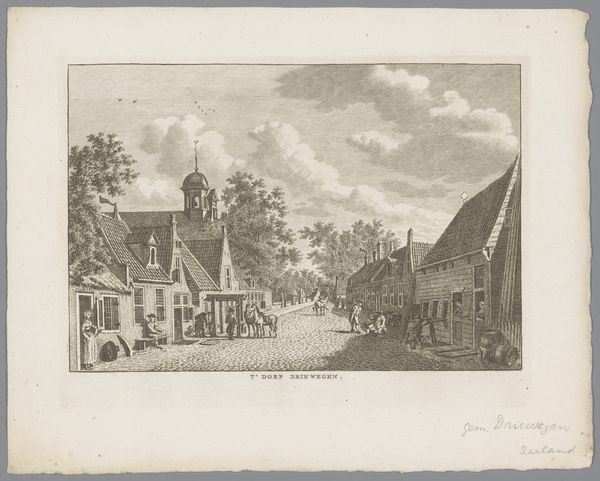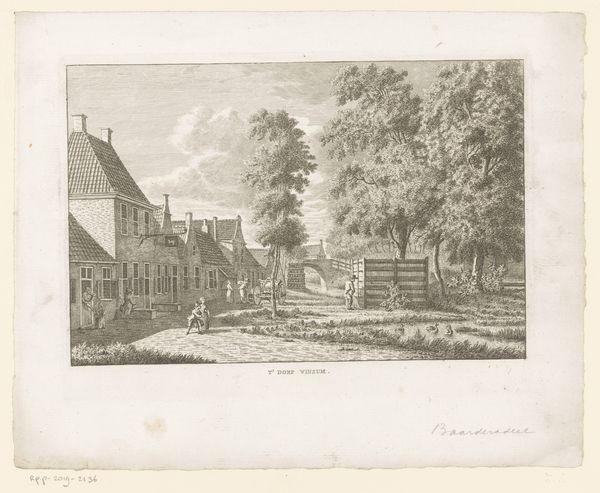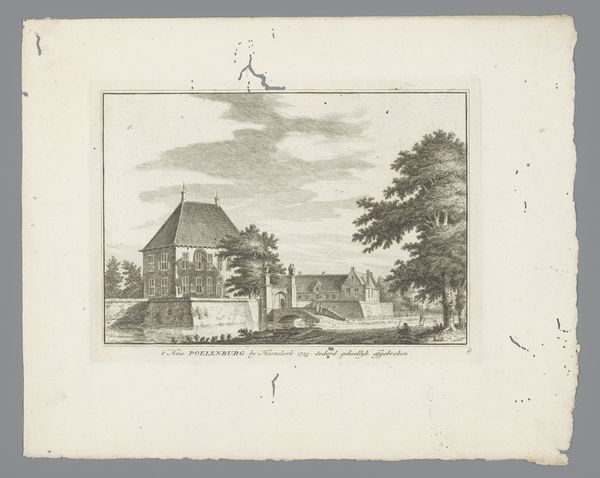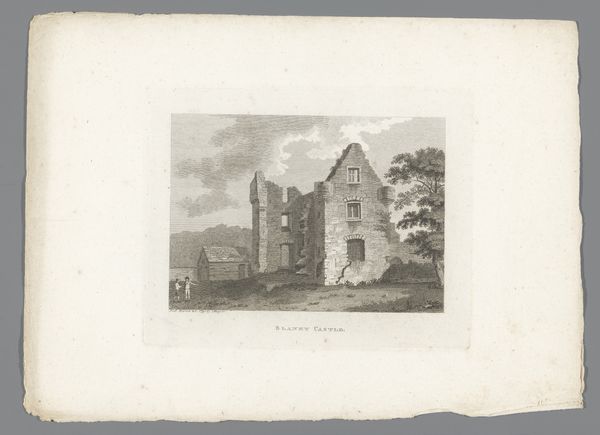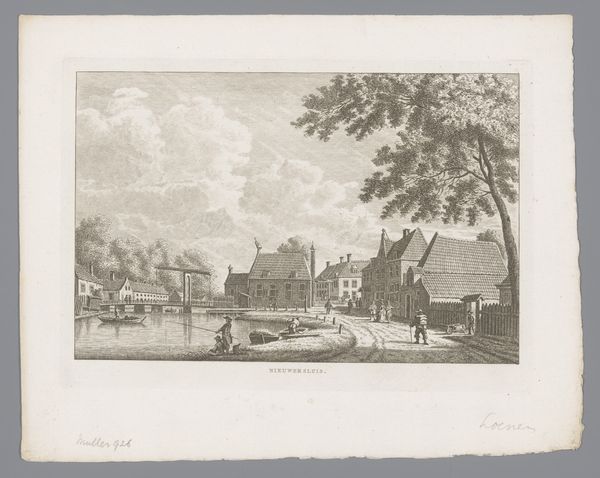
Gezicht op de Haagse of Waterslootse Poort te Delft 1827 - 1895
0:00
0:00
gijsbertuscraeyvanger
Rijksmuseum
Dimensions: height 221 mm, width 295 mm
Copyright: Rijks Museum: Open Domain
Editor: This is "View of the Hague or Watersloot Gate in Delft," made sometime between 1827 and 1895 by Gijsbertus Craeyvanger. It’s a print, an etching and engraving on paper. I'm immediately drawn to the way the artist has created depth using the light and shadow. What aspects of its composition do you find most compelling? Curator: The most striking formal element is the geometric organization of space. Notice how Craeyvanger uses the gate itself, and the road leading toward it, as orthogonals that converge on a vanishing point somewhere within the structure of the gate, drawing our eye into the pictorial space. What effect does this linear perspective have? Editor: It makes the city gate seem monumental, almost imposing, even though it's rendered with such fine detail. Is the somewhat limited tonal range significant here, considering that the printing methods of the time offered more possibilities? Curator: Precisely. Observe how the artist manipulates value—the gradations of light and dark—to delineate forms. The subtle transitions of tone create the illusion of atmosphere and surface texture. This restricted palette accentuates the forms without distractions. How do you feel about the somewhat high vantage point in this composition? Editor: It allows for a panoramic view, almost theatrical. And seeing the everyday life happening right there, outside the gate, gives the structure scale, placing everything into a certain order and context. The high vantage point allows you to understand this city and its space from within its limits. Curator: Exactly. It orchestrates space and the viewing experience, making us very conscious of looking as an activity. Editor: That's really fascinating; I hadn't considered the visual construction in such detail. Thank you!
Comments
No comments
Be the first to comment and join the conversation on the ultimate creative platform.
